
After a slow start, 2019 rounded out to be an undeniably strong year for consumer VR, setting up a springboard into a big 2020. Here’s an overview of the major happenings in VR over the last year, and a glimpse of what will come in 2020.
5 Major New Headsets and What They Mean for the Market
2019 started out slow as the industry waited with baited breath for the launch of the latest wave of headsets, but things started heating up once they finally hit the market. Here’s a look at the biggest headset launches of 2019 and what they’ve meant to the industry so far.
Oculus Quest
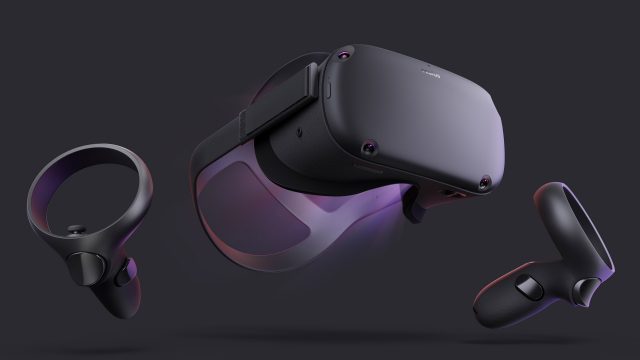
Oculus Quest is surely the most important headset to launch in 2019. We called it the “first great standalone VR headset” in our review, thanks to a reasonable $400 price point, full 6DOF tracking (which allows it to play games functionally on par with high-end VR headsets) and no PC required.
As a standalone VR headset built on smartphone hardware, Quest can’t compete in the graphics department against high-end PC VR headsets, but there’s no question that it’s the class leader in ease-of-use (a place where tethered headsets are still struggling). And if you happen to have a gaming PC anyway, Quest also doubles as a PC VR headset.
The headset’s ease-of-use, solid game library, and reasonable price has pushed it to become Oculus’ best rated headset on Amazon thus far. On multiple occasions, Facebook has signaled that it’s been pleased with Quest’s sales traction, and the headset appears to be hogging most of the company’s VR focus.
Oculus Rift S
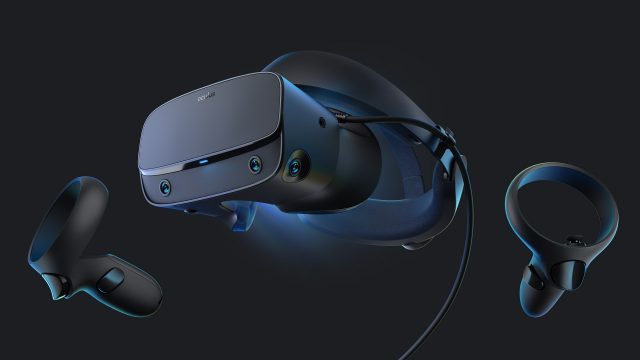
Oculus also launched Rift S in 2019, its second-ever tethered VR headset. In our review we found the headset to be a good choice for newcomers but a difficult pick for VR vets due to a handful of downgrades compared to the original Rift, but it was clear from the start that Facebook’s ultimate goal with the headset was to improve ease-of-use (by moving away from external tracking sensors) and cut costs.
On those fronts, Rift S seems to have largely succeeded; its $400 launch price was half of the launch price of the original Rift with Touch controllers, and we certainly haven’t been missing the external sensors of the original since getting our hands on Rift S. Thanks to the backing of a strong content library, Rift S packs a lot of value, making it easy to recommend as the best entry-level headset for PC VR.
Valve Index
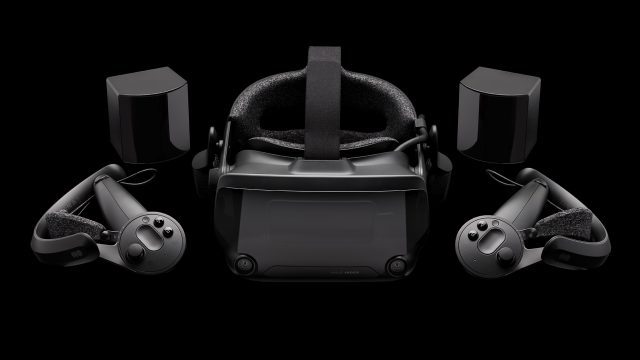
After tons of speculation, Valve finally jumped into the VR headset space with its own first-party hardware in 2019. While the company had originally collaborated with HTC to create the Vive, this time around Valve opted to handle everything on their own.
In our review we called Index “the enthusiast’s choice” thanks to category-leading visuals, ergonomics, and audio, as well as solid controllers. And while it’s a lovely headset once you’re inside, there’s no denying the significant $1,000 price tag and sub-par ease-of-use due to external tracking sensors and last-gen boundary setup.
Still, Index is a hugely important headset because it acts as a high bar that future headsets can strive toward and demonstrates the continued existence of an enthusiast class of VR consumers who are willing to pay for a high-end VR experience. But it’s also made for an awkward relationship between Valve and HTC who are now positioned more as competitors than partners.
Vive Cosmos
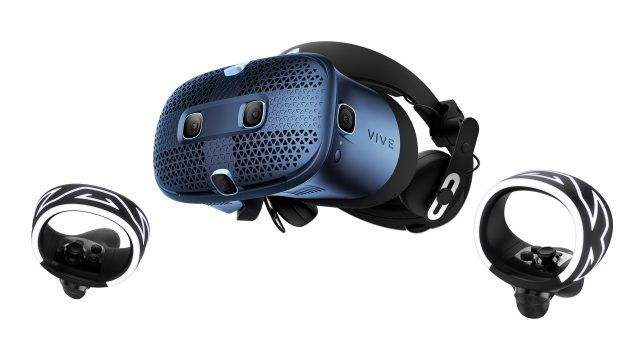
In 2019 HTC launched Vive Cosmos, its first true successor to the original Vive headset. Like Facebook with Rift S, HTC opted to make its latest headset easier to use by ditching external tracking sensors for inside-out tracking.
In our review we called Cosmos “a decent headset up against stiff competition.” Indeed, worst-in-class tracking and iffy ergonomics has left Cosmos overshadowed by the considerably less expensive Rift S and the more expensive but higher-fidelity Index. And while HTC had positioned Cosmos as a move toward a more user-friendly headset, the device’s awkward reliance on Steam (despite a Viveport front-end) arguably takes it a step back in user-experience compared to the original Vive.
All in all, Cosmos’ flaws caused it to tank in online customer reviews out of the gate, and if the headset is selling well even against its competition we certainly haven’t seen much evidence of it.
HP Reverb
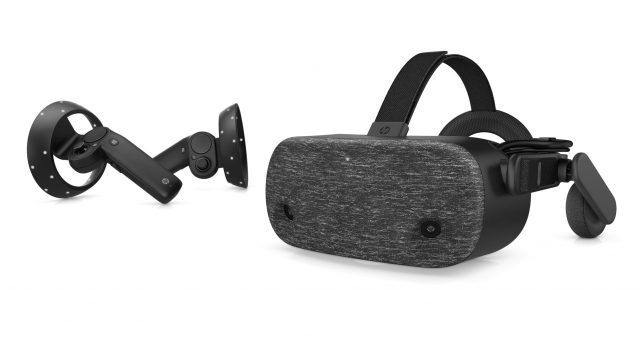
While Microsoft and its other VR partners seem to have largely abandoned the Windows VR platform, HP surprised us in 2019 with the launch of Reverb, its second VR headset. While it’s still stuck with Windows VR (and the worst-in-class controllers that come standard with such headsets), Reverb leads in pixel density, making it a compelling choice for simulator enthusiasts who tend to value resolution above other specs.
In our review we liked the headset’s ergonomic design and high density displays but found some other display artifacts which limited immersion. While our unit didn’t exhibit any problems, HP struggled with regular reports of serious hardware issues at launch, though later in the year the company claimed to have sorted things out.
While Reverb’s launch in 2019 shows that HP is seriously committed to PC VR, it hasn’t done much to alleviate the feeling that Microsoft is knowingly allowing the Windows VR platform to wither away.
Big VR Game Launches and Growing Developer Success
Since the first consumer VR headsets hit the market in 2016, developers have been steadily honing in on what makes a great (and successful) VR game. While it’s been a painfully slow process for developers and consumers alike, 2019 saw the launch of games which have objectively moved the needle forward in VR game design and set new records for developer success. Here’s a look at the most important moments in VR gaming in 2019.
Beat Saber’s Full Release and Developer Acquisition by Facebook

It wasn’t long after Beat Saber’s early access launch in 2018 that it was a clear success for its small indie developer Beat Games. Later that year the game launched on PSVR where it remains one of the best rated games on the platform. In 2019, Beat Games added new music & features and brought feature-parity to all versions of the game, culminating in a full launch out of early access alongside the launch of Quest on May 21st, 2019.
Even before the game launched on Quest, it reached a huge milestone as the first VR title—as far as we know—to have sold 1 million copies. This staggering success caught the attention of Facebook, leading to the surprise acquisition of Beat Games. This was likely primarily a defensive move in order to keep platform competitors from getting their hands on what is surely Quest’s most important game. But there’s an offensive element too: Facebook seems keen to accelerate the game’s adoption of new Oculus platform technologies aimed at driving user engagement.
Asgard’s Wrath Delivers the First Great VR RPG
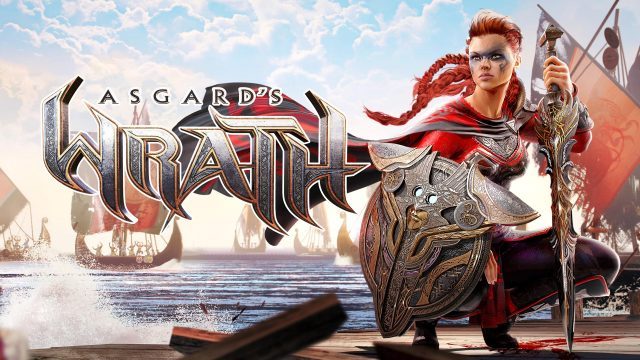
Purportedly VR’s largest game production yet released, Asgard’s Wrath capitalized on the longstanding desire for a meaty VR-native RPG. Players were treated to some 30 hours of content and a game which has been called a “must buy” by many. We thought enough of the title that we gave it our 2019 Game of the Year Award for the Oculus Rift.
The Oculus Studios-backed title appears to have been a success, but it also sets a very high bar for third-party (and mostly indie) developers to follow.
Stormland’s Innovative Open World and Developer Acquisition by Sony

Developed by veteran game and VR studio Insomniac Games, Stormland raised the bar in VR open-world game design with an innovative take on locomotion which offers players a sense of large scale freedom rarely seen elsewhere in VR. The game successfully combines a handful of different locomotion schemes and integrates them with satisfying combat for a core gameplay loop that’s easy to love.
We expect VR game design concepts from Stormland to proliferate into VR titles in 2020 and beyond. For its contributions we gave the title our 2019 Design Award for Excellence in Locomotion.
While Facebook scooped up Beat Saber’s Beat Games, Sony acquired Stormland’s Insomniac Games in 2019. Though the company probably bought the studio primarily for its success in the non-VR space, it was a strategic blow to Oculus nonetheless.
Blood & Truth Proves PSVR is Still Going Strong
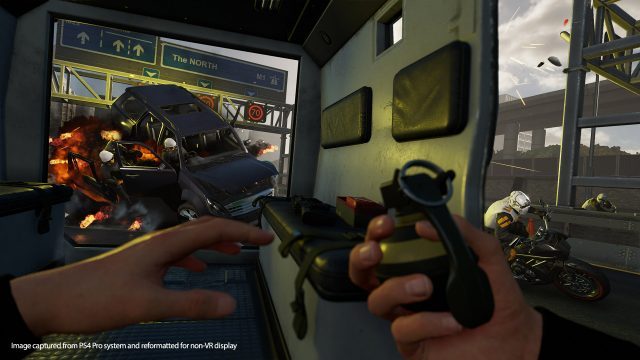
Blood & Truth was PSVR’s biggest game to launch in 2019 and managed to delight players with an action-packed narrative full of interesting moments. Blood & Truth is an impressively crafted experience that is not only expertly designed around the limitations of the aging PSVR, but even manages to raise the technical bar for character rendering and performances on any VR platform, even against much more powerful PC hardware.
Blood & Truth proved itself a worthy candidate for our 2019 Game of the Year Award for PlayStation VR. Sony too must have been happy with the game, which was created by its first-party PlayStation London Studio, as the group is already spinning up a team for its next VR exclusive title.
Boneworks Shows Demand for Hardcore VR Games
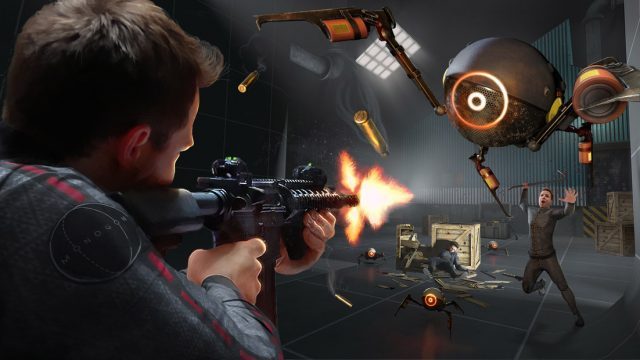
Boneworks was unapologetically built for hardcore VR veterans which came out in droves to support the launch of the game, pushing it to more than 100,000 units sold in its first week on just one platform.
By making nearly everything in the game physical and interactive, Boneworks delivers on player’s expectations of agency in a way that often goes far beyond its contemporaries. In the game, just about every object, enemy, and weapon is physically interactive, leading to moments where novel ideas—like, say, using a coffee mug as a melee weapon—actually work. While the heavy emphasis on physics can be frustrating and wonky at times, it’s hard not to feel a sense of added embodiment when your ideas about what’s possible in the game world are satisfied in a realistic fashion.
For its part, Boneworks is a flag in the ground which represents perhaps the most interactive physics sandbox seen in VR to date, and a proof point that glimpses the immersive benefits which come from more realistic virtual interactions—something we expect to see developers expand on into 2020 and beyond.
The developer’s strong vision and superb attempt at showing ‘what VR should be’ led us to giving Boneworks our 2019 Design Award for Excellence in Indie Development.
Star Wars: Vader Immortal Successfully Brings Big IP Into VR

While the number of great VR games is steadily growing, only a small handful of titles so far have been based on major franchises, and of those that are, even fewer still have actually been made from the ground-up for VR.
Star Wars: Vader Immortal is shining example of bringing a massively popular intellectual property into VR in a way that feels authentic and enjoyable. It’s key to have major franchises jumping into the VR landscape to pique the interest of mainstream consumers who may not be interested in VR as a technology unto itself; it’s even more important that the execution of big IP in VR is done well so that new users don’t get a bad taste from their first experience.
On that note, Vader Immortal—which was released in three parts over the course of 2019—hits all the right notes. It’s engaging and easy to play, thanks to a focus on narrative and immersion, rather than raw gameplay, making it a great first-time VR experience; it’s also one of the most visually impressive games available on Quest. So it’s no wonder why we gave the game our 2019 Game of the Year Award for Quest.
Superhot VR Earned $2 Million in One Holiday Week
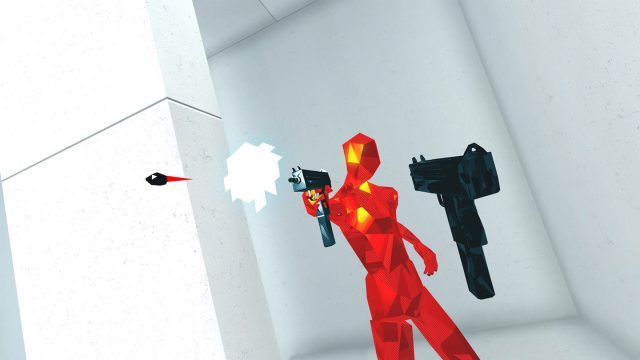
Having been originally released in 2017, Superhot VR is, by now, an ‘old’ VR game. But that hasn’t stopped it from paying dividends to its developer which announced in 2019 that the VR version of the game earned the studio more revenue than the original PC version upon which it was based.
And things don’t seem to be slowing down for Superhot VR. Surely bolstered by the launch of Quest in early 2019, the studio announced that the game had earned $2 million in revenue in a single week during the 2019 holiday.
While only a small handful of indie VR studios so far have found this sort of ongoing success, Superhot VR shows that, for projects of the right scope, there’s considerable (and growing) developer opportunity in VR.
Peering Into 2020
So, 2019 was a big year for VR in many ways, but what does 2020 hold? Here’s a few reason why we think 2020 will be VR’s biggest year yet.
Oculus Quest 2
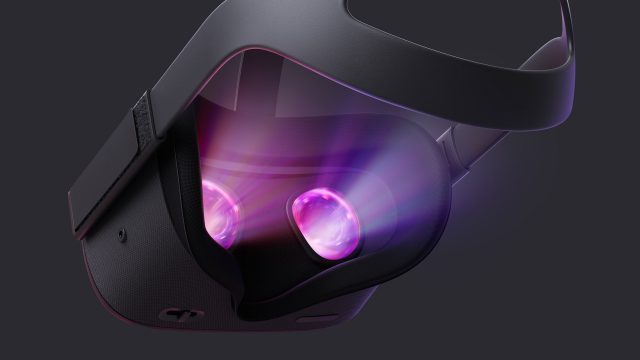
There’s no doubt that Facebook has been happy with the traction of its latest standalone VR headset, Oculus Quest. The company is moving quickly to build out the headset’s software features—like adding hand-tracking and PC support with Oculus Link—and it’s all but certain that Quest 2 is already in the works. The big question is when.
While Oculus’ history with the Rift would suggest that it would be several years from one headset to the next, VR as a market is much more defined today than it was back in 2016 when the first headsets hit the market. With the resources Facebook is pouring into Quest, we doubt there will be a similar three year span (like with Rift to Rift S) until the next Quest headset.
There’s reason to believe that Quest 2 will be announced in 2020. The biggest, perhaps, is that the current headset is based on a fairly old Snapdragon 835 processor which puts a pretty hard limit on what can be done with the headset by both Facebook and third-party developers. Moving to a more advanced hardware platform like, say, Qualcomm’s recently announced Snapdragon XR2, would open the door to substantial improvements. Of course, that’ll only happen if the price is right; Quest’s reasonable $400 price point is a big part of its appeal.
Oculus Rift 2
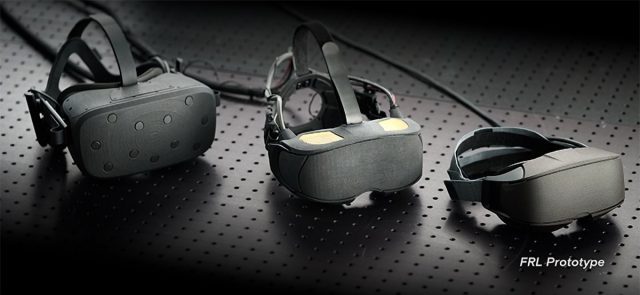
And then there’s Oculus Rift 2. Facebook launched its second PC headset, Rift S in early 2019, but it was a bit of a side-grade and cost-down to the original Rift rather than a true successor. In 2019 Facebook showed some very impressive prototype VR headsets with major advances in optics and form-factor, but has yet to announce Rift 2.
The prototype tech seems like it will form the foundation of Rift 2, but there’s a bigger question on our mind: will Quest 2 and Rift 2 be the same headset? This would be an ambitious move, but there’s already some hints that it’s the direction Facebook is headed.
One of the biggest clues so far is Oculus Link. The feature (still in beta), allows Quest to plug into a PC to play games from the Rift library. In a way, the feature calls into question why someone would even consider buying the Rift S over Quest if both cost the same.
Along with cross-buy between many Quest and Rift apps, Facebook is trying to unify its VR userbase to make a broader audience for developers. If every customer that owned an Oculus headset could play both standalone Quest content and PC-powered Rift content, that’s a huge win for the ecosystem.
Alternatively, rather than combining Quest 2 and Rift 2, Oculus could keep Quest as its lower-end product line while positioning Rift 2 as a piercer but higher-fidelity headset to compete for against Valve’s Index in the VR enthusiast space.
All Eyes on Half-Life: Alyx

There’s no doubt that the Half-Life: Alyx, the upcoming made-for-VR game from legendary developer Valve, is the most anticipated VR title of 2020. And it will have ramifications beyond the existing VR market; many mainstream gaming and tech publications which rarely (or effectively never) cover VR will be picking up the requisite headsets and hardware to take a good close look at the game when it launches. Half-Life: Alyx will be the biggest opportunity to date for VR to show mainstream gamers why it’s worthy of their attention.
Big Oculus Games on the Horizon

After a string of not-so-great titles from Oculus Studios, Facebook’s first-party VR publisher, between 2017 and mid-2019, Asgard’s Wrath and Stormland ended the year as wins for the Oculus content library.
Oculus Studios also has placed big bets on several highly anticipated games set to launch in 2020: Medal of Honor: Above and Beyond, Lone Echo II, and Phantom: Covert Ops. It remains to be seen whether these games will become key additions to the Oculus content lineup or go down in history as flops, but the outcome is important because Facebook is effectively the only company in town that’s funding big VR titles from third-party studios.
Beyond games, Facebook is also set to launch its brand new social VR platform, Facebook Horizon in 2020. Despite being one of the world’s leading social media companies, Facebook’s social VR strategy has been chaotic at best, but it looks like the company is finally trying to consolidate its efforts into a platform that’s more universally available across its biggest headsets in 2020.

Facebook Horizon will be the only first-party social VR application of its kind, and it has the potential to seriously shake up the social VR space which is currently dominated by third-party VR apps.
– – — – –
What were your personal ‘most important moments’ in VR for 2019 and what are you looking forward to most in 2020? Drop us a line below!
The post With New Headsets & Big Games in 2019, VR is Poised for an Even Better 2020 appeared first on Road to VR.
from Road to VR https://ift.tt/2FvvgSV
via IFTTT
No comments:
Post a Comment